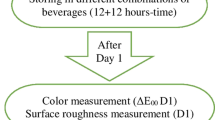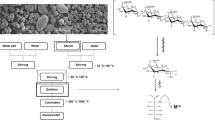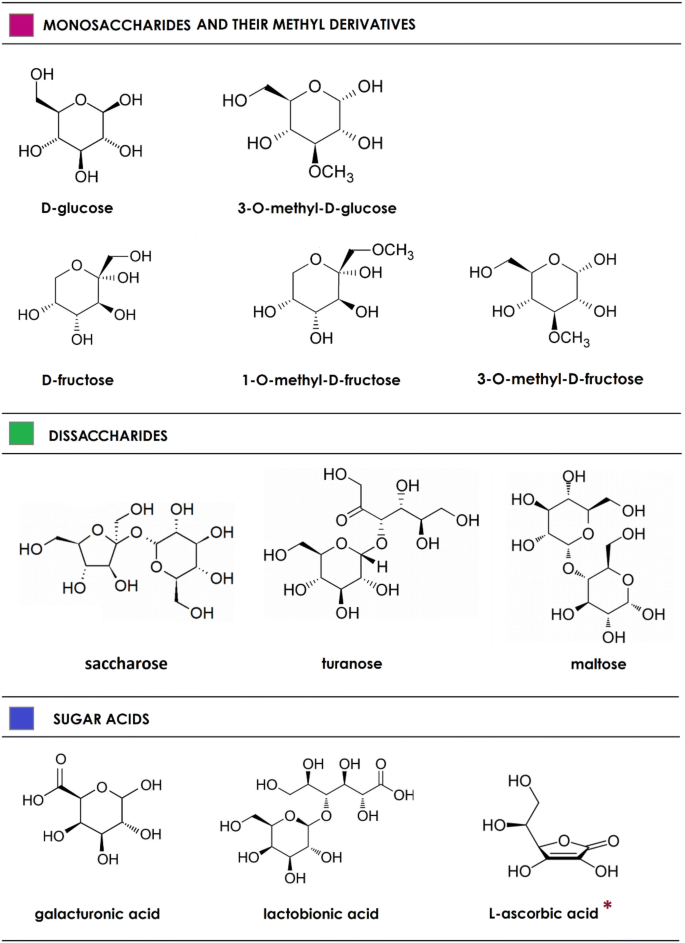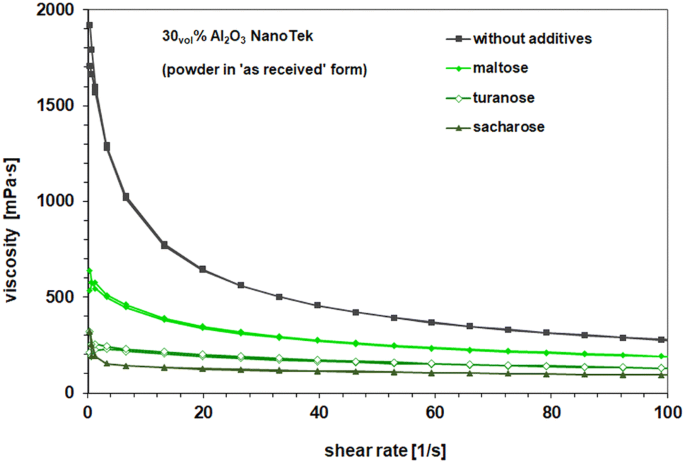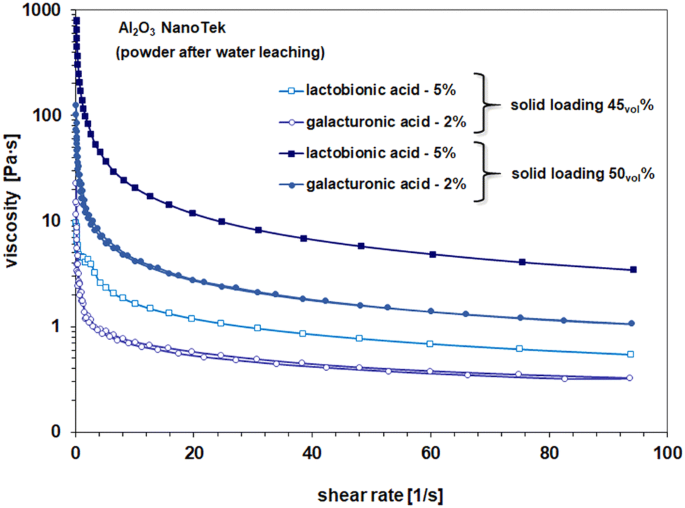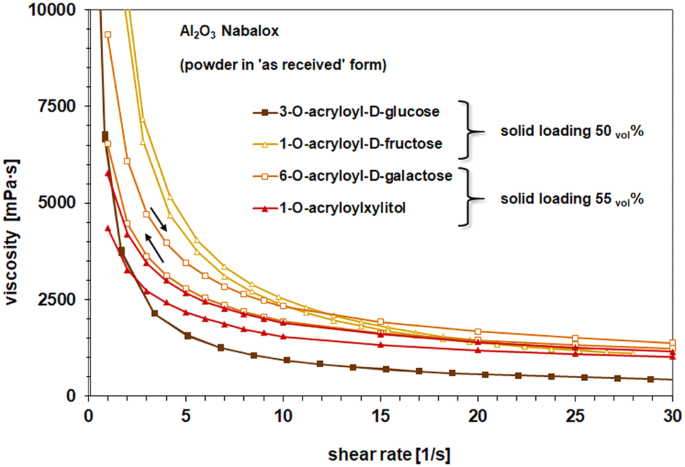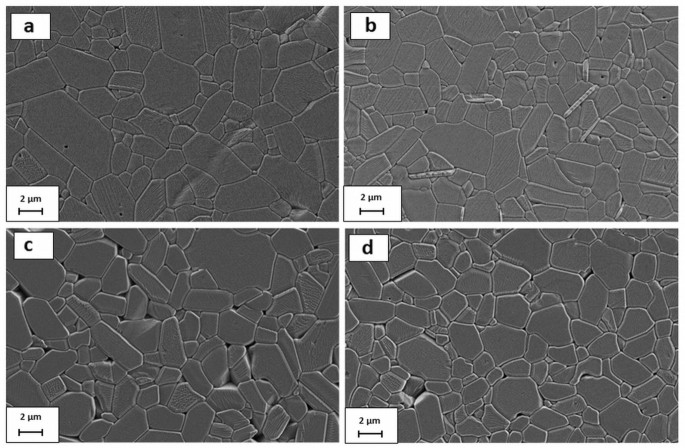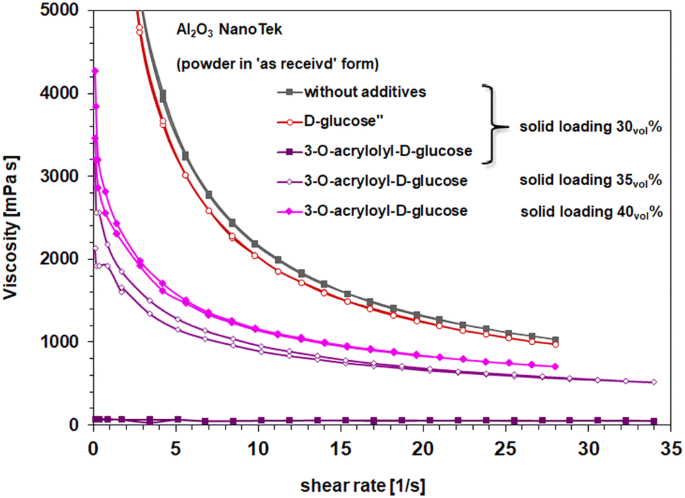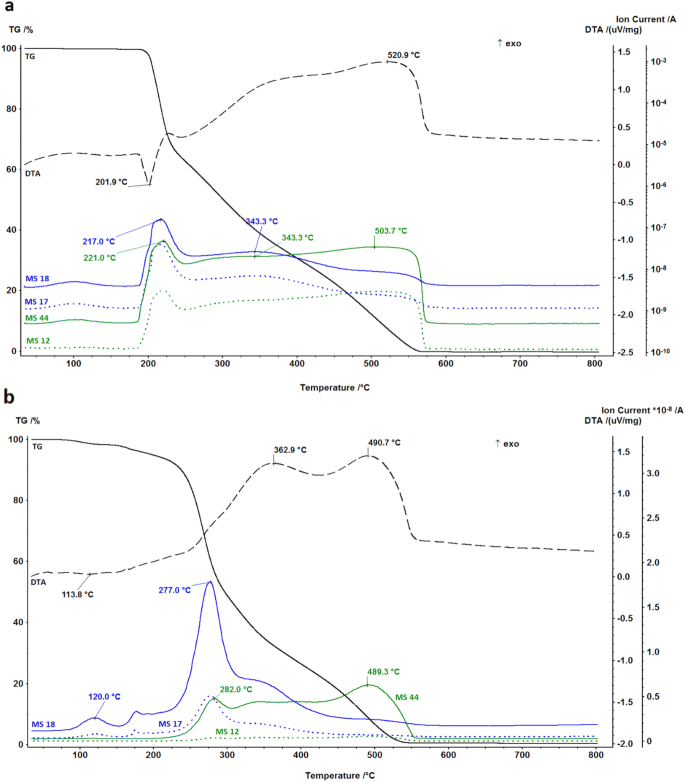Abstract
Herein, we present manifold possibilities of using saccharides and their derivatives in colloidal processing of ceramics. Sugar-based compounds are attractive alternatives for commonly used organic additives, because they are renewable materials, are non-toxic to human skin, and have a positive influence on the rheological behavior and stability of ceramic suspensions which is reflected in the properties of green and sintered bodies. The examined substances include sugar acids (galacturonic and lactobionic acid) as highly effective deflocculants for nanopowders; acryloyl derivatives of monosaccharides and sugar alcohols as organic monomers in gelcasting; polysaccharides as binders; and l-ascorbic acid as an activator of radical polymerization in gelcasting. The multifunctionality of the selected compounds as well as their thermal decomposition during sintering of ceramics is discussed. The study also reviews the related literature focusing on sugar-based compounds in ceramic processing.
Similar content being viewed by others
Avoid common mistakes on your manuscript.
1 Introduction
Saccharides (carbohydrates) are the most abundant biomolecules on the planet. They compose the structural material of the cell walls of plants and bacteria (e.g., cellulose), play important roles in the lubrication of skeletal joints (e.g., hyaluronic acid), and are major components of our diet (e.g., sucrose and starch). Moreover, saccharides are structural components of nucleic acids, RNA and DNA (e.g., deoxyribose). The most common group of saccharides includes sugars. The term “sugars” refers to mono- and disaccharides, which are sweet-tasting, water-soluble carbohydrates used in the food industry [1, 2]. The chemistry of saccharides is comprehensive and covers not only simple sugars and polysaccharides but also their derivatives, such as sugar acids, sugar alcohols, deoxysugars, and aminosugars. Figure 1 presents the classification of saccharides and examples of compounds belonging to each group. Depending on the number of sugar units in a molecule, the carbohydrates are divided into monosaccharides, oligosaccharides, and polysaccharides. Monosaccharides are composed of one sugar unit and thus are also called simple sugars. Among them, aldoses and ketoses are distinguished sugars. Aldoses are aldehydes, and their endmost functional group is –CHO, whereas ketoses are ketones and contain a carbonyl group C=O as their endmost functional group. Then, depending on the chain length, monosaccharides are divided into trioses, tetroses, pentoses, hexoses, and heptoses, both in the case of aldoses and ketoses. Among the two most common monosaccharides, glucose and fructose, the first one is an aldose and the second one is a ketose; both are hexoses with the general formula C6H12O6. Moreover, as in case of many organic compounds, d- and l-enantiomers of saccharides exist, which are mirror images of each other.
The second group of carbohydrates, oligosaccharides, have 2–10 monosaccharide units. The best-known disaccharide is sucrose composed of a glucose unit and a fructose unit. Sucrose is used in everyday life as table sugar. The other disaccharide—lactose—is composed of glucose and galactose and is found in milk. The other oligosaccharides although less common, do occur in nature. Stachyose, for example, which is tetrasaccharide composed of two galactose units—one glucose unit and one fructose unit—can be found in vegetables (for example beans).
The third group of carbohydrates are polysaccharides that contain from ten to several thousand monosaccharide units. They are divided into homopolysaccharides and heteropolysaccharides. Homopolysaccharides are composed of a single type of sugar unit, for example cellulose whose structure is the same as that a linear chain of linked d-glucose units. Heteropolysaccharides, also called heteroglycans, contain two or more different monosaccharide units. Some well-known examples of heteropolysaccharides are hyaluronic acid (recently, more often used in cosmetics) and heparin (naturally occurring in humans and playing the role of anticoagulant).
Furthermore, there exist various derivatives of saccharides. Notably, sugar alcohols, such as xylitol or sorbitol, have been recently used as sweeteners to replace sucrose. An interesting example of a glucose derivative is l-ascorbic acid, which is well known as vitamin C and is a naturally occurring antioxidant. Finally, there are almost endless possibilities of the synthesis of any other derivatives of saccharides with new properties and thus new applications in different areas, including ceramic technology, the examples of which are presented in the following text.
Colloidal processing of high-performance ceramics requires effectively working processing agents like deflocculants [3], binders [4, 5], and organic monomers [6, 7]. The main challenge of colloidal processing of ceramics lies in achieving time-stable, low-viscosity aqueous suspensions with high solid loading of well-dispersed non-agglomerated particles [8]. Processing agents should influence these required properties of ceramic suspensions while realizing “green chemistry”. Thus, in colloidal processing of ceramic materials, saccharides are attractive alternatives for commonly used organic additives (including synthetic polymers). Most saccharides are renewable materials, inexpensive, non-toxic, and mostly water-soluble.
Responding to the above demands, this study presents various possibilities of using saccharide-based compounds in colloidal processing of ceramics. The main emphasis is placed on the discussion of the use of saccharides as deflocculants for nanoceramic powders and organic monomers in gelcasting. This study covers a summary of the research carried out in Advanced Ceramics Group at Warsaw University of Technology, Poland, as well as provides a basic review of the literature related to this topic.
2 Saccharide-based compounds as deflocculants of ceramic nanopowders
2.1 Materials
Research was performed for Al2O3 NanoTek® (Nanophase Technologies Corporation, USA) with an average particle size 47 nm (calculated from BET). The powder was a 70:30 mixture of δ-Al2O3 and γ-Al2O3 phases with a density 3.53 g/cm3 (measured on helium pycnometer AccuPyc II 1340, Micromeritics) and a specific surface area of 36 m2/g (measured on ASAP 2020 V3. 01, Micromeritics). The particles were spherical and agglomerated. The powder was used as received and after water leaching. Water leached powder was prepared based on the procedure described by Danelska et al. [9]. Water leaching allows the removal of impurities from powder surface [10, 11]. Two types of saccharides or their derivatives—commercially available and synthesized derivatives—were examined as potential deflocculants for nanoalumina powder. d-glucose, d-fructose, saccharose, and maltose were purchased from Avantor Performance Materials, Poland (formerly POCh, Poland). Turanose, galacturonic acid, and lactobionic acid were purchased from Sigma-Aldrich, Poland. Derivatives 1-O-methyl-d-fructose and 3-O-methyl-d-fructose were synthesized at Warsaw University of Technology as described in [12, 13]. Derivative 3-O-methyl-d-glucose was purchased from Koch-Light Laboratories Ltd, England.
2.2 Rheological studies of nanoalumina suspensions
2.2.1 Suspensions containing mono- and disaccharides and their selected derivatives
Nanometric alumina aqueous suspensions with monosaccharides, disaccharides, and monosaccharide derivatives were prepared in redistilled water at 20 °C. The content of nanopowder in the suspensions was 30 vol%. The content of saccharide-based compound was 3 wt% (based on the alumina powder). The suspensions were mixed in an alumina container in a planetary ball mill PM100 (Retsch) for 90 min at 300 rpm. Subsequently, the alumina aqueous suspensions were ultrasonicated (Model 3000 Ultrasonic homogenizer, Biologics, Inc.) for 15 min and then mixed again for 15 min in the planetary ball mill. The rheological properties of the suspensions were measured using Brookfield DV + II-Pro rheometer (Brookfield Engineering Laboratories Inc., USA). The shear rate increased from 0.1 to 100 s−1 and back to 0.1 s−1. Then, the specimens were fabricated by slip casting on a porous alumina substrate in polyethylene molds. The densities of the obtained green bodies were measured by Archimedes’ method in kerosene.
2.2.2 Suspensions containing sugar acids
In the case of the use of sugar acids as deflocculants of nanometric alumina powder, the methodology of slurry preparation was modified based on the gained experience and observations. Nanoalumina powder purified by water leaching was used [14]. Sugar acids were dissolved in deionized water, and then, nanoalumina powder was added. Slurries were mixed in alumina containers in a planetary ball mill PM200 (Retsch) for 60 min at 300 rpm. Then, the slurries were mixed and degassed in a THINKY ARE-250 Mixing and Degassing Machine for 8 min at 800 rpm (mixing) and 1800 rpm (degassing). The contents of the nanopowder in the suspensions were 45 and 50 vol%. The contents of galacturonic and lactobionic acid were 2 and 5 wt% (based on the alumina powder), respectively. The rheological properties of slurries were measured using Kinexus Pro rheometer (Malvern Instruments) in a plate–plate geometry. The gap between plates was 0.5 mm. The shear rate increased from 0.1 to 100 s−1 and then decreased to 0.1 s−1. Then, the specimens were fabricated by slip casting on a porous alumina substrate in polyethylene molds. The densities of the obtained green bodies were measured by Archimedes’ method in kerosene. The microstructure of the green samples was observed using a scanning electron microscope (SEM; Hitachi SU-8000). DTA/TG measurements of the selected saccharides were carried out using Netzsch STA 449C coupled with a quadrupole mass spectrometer (Netzsch QMS 403C).
2.3 Results and discussion
Deagglomeration of ceramic nanopowders is an important issue that has been studied for many years. The possibility of obtaining well-dispersed nanoceramic suspensions of high concentration of the solid phase will contribute to homogenous densification of the material after sintering and probably limitation of grain growth. The use of selected saccharides as deflocculants (dispersing agents) for nanoalumina was first described by Schilling et al. [15]. They discussed the influence of d-fructose and sugar alcohols on the viscosity on nano-Al2O3 suspensions and pastes, and noticed that depending on the chemical structure of the saccharide, the rheological behavior of the suspension differed. A closer examination of the mechanism explained the relatively higher viscosities of nanopowder suspensions, and the viscosity was reduced in the presence of monosaccharides by Li et al. [16], Ament et al. [17], and Cinar et al. [18]. They suggested the “bound-water” mechanism, according to which, bound water exists around the nanoparticles, but does not serve as a solvent in the system. It behaves as a part of the powder, which increases the effective solid content and thus increases the viscosity of the suspension. However, because of the adsorption of the monosaccharides on the nanoparticle surface, layers of bound water are meaningfully reduced.
Knowing that selected saccharides reduce the viscosity of the nanoalumina suspensions, we closely examined the chemical structure of monosaccharides and their methyl derivatives, which would allow the estimation of whether the orientation of hydroxyl groups in certain molecules is responsible for the ability to reduce the viscosity of nano-Al2O3 suspensions. We examined the influence of the selected disaccharides and sugar acids on the rheological behavior of nanoalumina slurries. The chemical structures of the examined compounds are given in Fig. 2. In the first group of deflocculants, there were two monosaccharides: d-glucose and d-fructose and their methyl derivatives. In the second group, the disaccharides were saccharose, turanose, and maltose. Within the third group, there were two sugar acids: galacturonic and lactobionic. Notably, galacturonic acid is a derivative of a monosaccharide, whereas lactobionic acid is a derivative of a disaccharide.
At first, the rheological properties of nanoalumina suspensions with 30 vol% ceramic powder were examined. Figure 3 presents the viscosity curves of suspensions with 3 wt% deflocculant with respect to alumina content. The viscosity curves showed that suspensions with added d-fructose showed noticeably lower viscosity than those with added d-glucose, which agrees with the observations of Schilling et al. [15]. The lowest viscosity values were observed for methyl derivatives of d-fructose—1-O-methyl-d-fructose and 3-O-methyl-d-fructose. This behavior can be correlated with the phenomenon of three-dimensional hydrogen-bonded structure of water and has been described by Falkowski et al. [19].
It was then expected that the methyl derivative of d-glucose would also significantly reduce the viscosity of nanoalumina suspensions. However, the addition of 3-O-methyl-d-glucose only slightly decreased the viscosity compared with d-glucose. Thus, although monosaccharides and their methyl derivatives seem to be similar compounds, the differences in the spatial structures in these molecules and the position of hydroxyl groups at the saccharide ring are key factors that determine the dispersing ability of the molecules. Falkowski et al. [13] described the 3D structures of selected monosaccharides focusing on the axial and equatorial orientation of the hydroxyl group and the mutarotation phenomenon. The deflocculating properties of saccharides were discussed based on the adsorption behavior of selected monosaccharides and sucrose on the alumina surface [20, 21]. The second important issue was intramolecular hydrogen bonding in carbohydrates and its influence on water structure [22]. Figure 4 presents the influence of monosaccharides on the changes in the alumina surface. The surface of nanoalumina is completely hydroxylated and is composed of chemically bound water [16]. Water molecules near the surface constitute physically bound water as a result of hydrogen bonding with the surface hydroxyl groups. Nanoalumina particles are thus covered by water layers, which makes it difficult to obtain high solid loading in aqueous suspensions. The presence of bound water and free water can be determined by differential scanning calorimetry (DSC) measurements at negative and positive temperature ranges [14, 16].
Saccharides may be adsorbed on the nanoalumina surface in two ways: first, by hydrogen bonding with surface -OH groups as shown by number 1 in Fig. 4, and second, through the substitution of the surface hydroxyl group and formation of complexes with the structural metal ions on the oxide surface (number 2 in Fig. 4). Figure 4 shows an example of a saccharide, 1-O-methyl-d-fructose. Adsorption of saccharides makes the surface less available for water molecules and significantly reduces the layers of water around the particles. This leads to lower viscosity of nanopowder aqueous suspensions. The chemistry of alumina and its reactions in an aqueous environment were described in detail by Kasprzyk-Hordern [23]. Glucose and cellulose adsorption on the kaolinite surface were discussed by Lee et al. [24]. Adsorption of saccharides depends on the pH of suspensions.
The addition of monosaccharides and their derivatives to the suspensions allowed us to obtain highly densified green bodies formed by slip casting. The density was 66% and 68% of the theoretical density, respectively, for samples deflocculated by d-fructose and 1-O-methyl-d-fructose. Notably, the obtained green densities were unusually high and could be observed, and in the case of samples, be obtained by isostatic pressing instead of casting. This can be explained using the particle-size distribution and morphology of nanometric alumina. The particles are spherical in shape. Although the average particle size is 47 nm, the real particle size ranges between 10 and 100 nm. Because of the low viscosity of suspensions, the alumina particles can move and can be arranged easily during the casting of samples. Smaller particles fill the empty spaces between larger ones and provide a high packing density, which results in high green density.
The other examined group of potential deflocculants of nanoalumina powder included disaccharides, such as saccharose, turanose, and maltose. According to the viscosity curves shown in Fig. 5, it can be concluded that saccharose allows us to obtain a suspension of the lowest viscosity among all three disaccharides; however, the dispersing properties are not as good as in the case of methyl derivatives of fructose. The viscosity of the suspensions with the addition of turanose is slightly higher than that of suspensions with saccharose. Turanose is a structural isomer of sucrose [25], which means that the difference between these two compounds lies only in their 3D structures. The addition of maltose to the nanoalumina slurry does not provide satisfactory results, but a clear analogy to the results with the use of monosaccharides can be observed. Saccharose composed of glucose and fructose rings exhibits better dispersing properties than maltose composed of two glucose rings, which is similar to the case of monosaccharides; fructose exhibited better deflocculating properties than glucose. The research conducted with the use of disaccharides has, therefore, again revealed that the 3D structure, and thus, the position of -OH groups in a molecule is important factors when dispersing properties of saccharides are considered.
The third analyzed group of deflocculants included sugar acids. Two acids were chosen: galacturonic and lactobionic acid. Galacturonic acid is a derivative of the monosaccharide d-galactose, whereas lactobionic acid is a disaccharide composed of d-galactose and gluconic acid, which is an oxidized form of d-glucose (Fig. 2).
Preliminary research revealed that with the use of the above-mentioned sugar acids, it is possible to obtain nanoalumina suspensions with 30 vol% solid loading and low viscosity; therefore, the aim of the following experiments was to increase the content of the ceramic nanopowder. To accomplish this goal, alumina nanopowder was pre-treated with water leaching, which allowed purification of its surface. Water leached nanoalumina powder was prepared based on the procedure described by Danelska et al. [9]. Mikkola et al. [10] and San et al. [11] showed that water leaching allows the removal of the impurities from the powder surfaces. Figure 6 presents the viscosity curves of water leached nanoalumina suspensions. Addition of 5 wt% lactobionic acid or 2 wt% galacturonic acid provided ceramic suspensions with high solid loading of 45 and 50 vol%. Such a high solid loading in nanoalumina suspensions combined with low viscosity has only been observed for sub-micrometer powders. This phenomenon was explained by Wiecinska et al. [14]. Similar to the conclusions of Li and Falkowski, the bound-water mechanism and 3D structures of the molecules were key factors with respect to the deflocculating properties of sugar acids. Densities of green bodies obtained by slip casting were 68% and 69%, respectively, for samples containing galacturonic and lactobionic acid. The densities were similar to those obtained with the use of monosaccharides and their methyl derivatives. The arrangement of particles was confirmed by SEM images presented in Fig. 7, showing the microstructures of the obtained green bodies with the use of 1-O-methyl-d-fructose and lactobionic acid.
Cinar et al. [26] examined the other sugar acid, l-ascorbic acid, as a potential deflocculant of nanoalumina powder. They concluded that with the addition of 1 wt% l-ascorbic acid, it is possible to obtain a low-viscosity nanoalumina suspension in which the concentration of the powder equals 35 vol%. Interesting observations were provided by Sikora et al. [27] and Schilling et al. [28,29,30] who examined the rheological behavior of alumina suspensions with the addition of polysaccharides: dextrin and maltodextrin. In their research, micrometer-size alpha-alumina was used. The rheological properties of suspensions depended on the molecular weight of dextrin. Dextrins with molecular weights between 6450 and 15,000 Da were the most effective. Saccharides can also be used together with other additives (e.g., polyacrylates) to improve the rheological behavior of slurries [31]. Thus, monosaccharides and their derivatives are, so far, the best deflocculants for nanoalumina powders. Their influence on the rheological properties of other nanopowders has still not been examined in detail.
3 Saccharide-based compounds as monomers in gelcasting processes
3.1 Materials
Studies have been conducted on Al2O3 NABALOX 713-10 (Nabaltec, Germany) with an average particle size of 0.70 μm, density of 3.96 g/cm3, and a specific surface area of 8.0 m2/g. The powder was used as received. All monomers used in the study were synthesized at Warsaw University of Technology [32,33,34,35]. Their chemical structures are presented in Fig. 8 . Diammonium hydrocitrate (DAC; Avantor Performance Materials, formerly POCh, Poland) and citric acid (CA; Merc) were used as dispersants. N,N,N′,N′-tetramethylethylenediamine (TEMED; Fluka) acted as an activator and ammonium persulfate (AP; Merc; 1 wt% aqueous solution) was the initiator of polymerization.
3.2 Gelcasting and sample characterization
At first, aqueous ceramic slurries with each monomer were prepared. The content of alumina powder was 50 and 55 vol%. The content of monosaccharide derivative was 3 wt% (with respect to alumina content) and that of TEMED was 2 wt% (with respect to monomer content). The quantity of dispersant was matched separately to determine the optimal values for each ceramic suspension. All additives were dissolved in redistilled water at room temperature. Suspensions were mixed in 50 ml containers made of alumina in a planetary ball mill PM100 (Retsch) for 60 min at 300 rpm, using alumina grinding media 5–7 mm in diameter. Next, the slurries were poured into plastic beakers, and deaeration was carried out for 20 min under reduced pressure in a vacuum desiccator supplied with a magnetic stirrer. After mixing and degassing the slurry, the initiator of polymerization, AP, was added (0.3–0.5 wt% with respect to monomer content) and additionally stirred for 5 min. Finally, the suspensions were cast into identical plastic molds of 20 mm diameter at room temperature. The molds were covered with a glass plate to cut off the access of air which could negatively influence the polymerization process (oxygen inhibition phenomena). After gelation, the samples were removed from the molds and dried for 24 h at 50 °C. The specimens were sintered at 1600 °C for 2 h.
The rheological behavior of ceramic slurries was examined at room temperature using a rotational Brookfield DV + II- Rheometer. The viscosities of the slurries without initiator were measured as a function of shear rate. The densities of green bodies were measured by the Archimedes’ method in kerosene. The tensile strength of the specimens before sintering was determined by the Brazilian test. The tensile strength was calculated as σt = (2P/πTD), where P is the force damaging the sample, and T and D are the thickness and the diameter of the disk, respectively. The microstructure of the specimens was observed using a scanning electron microscope (SEM Zeiss Ultra Plus).
3.3 Results and discussion
Table 1 lists the basic properties of the synthesized monomers, such as wetting angle of the alumina substrate and glass transition temperatures of the polymers obtained by radical polymerization of the monomers. The measurements were also performed for 2-hydroxyethyl acrylate, which is a commercially available monomer that is often described in the literature regarding gelcasting process [36]. It was used as a comparative substance. 6-O-acryloyl-d-galactose exhibits the best wettability of ceramic substrate (wetting angle below 10°). Glucose derivates also show very good wettability (wetting angle 11°). All investigated monomers wet alumina much better than water (wetting angle 46°). A low value of wetting angle can be related to the development of adhesive coating around ceramic particles. This can facilitate the formation of polymeric networks, which increase the mechanical strength of ceramic green bodies. The glass transition temperature of all polymers is below room temperature. This means that in conditions of the gelcasting process, which is carried out at room temperature, polymers have elastic properties. The highest Tg value of 5.5 °C was of the polymer obtained from 3-O-acryloyl-d-glucose, which is the lowest galactose derivative (− 28 °C). Thus, all investigated compounds had beneficial elastic properties for application in shaping of ceramic materials.
Figure 9 shows the viscosity curves of alumina slurries with four monomers—acryloyl derivatives of glucose, fructose, galactose, and xylitol. The slurries also contained diammonium hydrocitrate (dispersant) and N,N,N′,N′-tetramethylethylenediamine (activator of polymerization). All four suspensions exhibited shear thinning behavior, but their viscosities differed significantly. Although the slurry with 1-O-acryloyl-d-fructose had the lowest solid content (50 vol%), it had the highest viscosity in contrast to the suspension containing 3-O-acryloyl-d-glucose.
The increase of solid loading from 50 to 55 vol% was possible when 6-O-acryloyl-d-galactose and 1-O-acryloylxylitol were used. However, the slurries with higher content of ceramic powder exhibited thixotropic properties, what is evidenced by the fact that the viscosity values are different for increasing and decreasing shear rate (marked with black arrows).
These results show that the differences in the spatial structure and the chemical nature of the acryloyl derivatives of saccharides have a significant influence on the rheological properties of ceramic slurries. This knowledge is also crucial in other applications, for example, in the combined techniques, such as gelcasting in high magnetic fields which allows fabrication of textured ceramics. The low viscosity of suspensions together with high concentration of ceramic powders is essential to rotate ceramic particles under magnetic field exposure [37,38,39]. Textured ceramics have recently attracted attention because of their improved mechanical, electrical, piezoelectric, and ferroelectric properties in comparison to randomly oriented sintered bodies [40, 41].
Table 1 also shows the values of the densities of the green bodies obtained by gelcasting with 3 wt% addition of all synthesized monomers to the slurry and the densities of the sintered samples. The lowest green density of 55.4% of the theoretical density was observed for 1-O-acryloyl-d-fructose samples. This can be explained by the lower solid content in the slurry in comparison to other suspensions. The other samples had a similar green density around 60–63%. It can be noticed that the use of different acryloyl derivatives of saccharides had a considerable impact on the tensile strength of the green bodies (Table 1). The 6-O-acryloyl-d-galactose samples showed the highest tensile strength, which was more than seven times higher than the corresponding values of 1-O-acryloylxylitol samples. This difference can be explained by the shape of the monomer molecules, because only galactose molecules appear to exhibit flat (not spherical) structures. The access to the acryloyl group which undergoes polymerization is hindered by spherical molecules in comparison to flat molecules. Thus, the polymerization of 6-O-acryloyl-d-galactose proceeds more easily and effectively than for other monomers. As a result, the polymers created may exhibit stronger bonds [34]. This is especially important for technological applications of near-net-shaping techniques, because high mechanical strength of green bodies allows machining in a green state without using diamond tools.
However, the use of different monomers does not influence the density of the sintered samples; all densities were in the range of 99.1–99.3% of the theoretical density. These values were also confirmed by SEM images of the microstructures of sintered samples (Fig. 10). The grains had similar sizes, and no defects were observed. The free spaces between the grains visible at some points were caused by the polishing procedure which may have pulled out grains from the material. Grain growth was observed as expected.
In addition, because of the presence of several –OH groups in the saccharide molecules, the sugar-based monomers were used in gelcasting without any external cross-linking agent, contrary to other acrylic monomers which for weak, linear polymeric networks without cross-linking agents [42, 43].
At this point, the multifunctionality of the synthesized saccharide derivatives must be also underlined. These compounds, initially obtained as an organic monomer for gelcasting, appeared to be the efficient dispersing agents for nano- and submicro-alumina suspensions, as presented in Fig. 11 and described by Falkowski et al. [19]. The addition of 3 wt% of the monomer 3-O-acryloyl-d-glucose without any other additives (as it is in Fig. 9 for Al2O3 Nabalox of coarse particles) significantly decreased the slurry viscosity in comparison to d-glucose. In addition, the addition of 3-O-acryloyl-d-glucose allowed us to obtain the suspension of 40 vol% with preferably low viscosity. The biggest advantage of using multifunctional compounds is that the total quantity of organic substances in ceramic suspensions is significantly reduced. As a result, lower amounts of gases are released into the atmosphere during binder burnout, and the defects caused by binder removal are minimized.
Another study revealed that l-ascorbic acid can be used as an activator of radical polymerization in the gelcasting process and in other shaping techniques related to gelcasting such as gale-tape casting. l-ascorbic acid can replace harmful N,N,N′,N′-tetramethylethylenediamine (TEMED). Ceramic suspensions containing l-ascorbic acid gel as fast as those containing TEMED. Moreover, the sugar acid has a positive influence on the rheological properties of ceramic suspensions and allows obtaining slurries of low viscosity and high solid loading (e.g., 45 vol% of ZrO2 TZ-8YS, Tosoh Corporation). As described by Wiecinska et al., the obtained samples were defect free and well densified [44]. The other interesting feature of using l-ascorbic acid as an activator of radical polymerization is that l-ascorbic acid, because of its dissociation (pKa values are 4.2 and 11.6), may be adsorbed on particle surfaces [45] and may stabilize the slurries in a wide range of pH values, shifting the isoelectric point toward lower pH values. TEMED, on the other hand, has no influence on surface charge, as shown in Fig. 12.
Depending on the presence of functional groups in the molecule, such as –COOH or –OH, the pH and dissociation constant differs; thus, the isoelectric point of the slurry may be located in the acidic or alkaline range. The differences in the adsorption on ceramic powder surface of l-ascorbic acid and TEMED and their different influence on surface charge allows matching the type of activator to a certain slurry. l-ascorbic acid can, therefore, play dual roles in colloidal processing of ceramic powders: as an activator in the gelcasting process and as a deflocculant for nanoalumina powders, as described in the previous section.
The use of saccharide-based compounds in ceramic processing is beneficial also because of their ‘clean’ burnout during sintering of ceramics. The type of gases released to the atmosphere during thermal decomposition of organic compounds can be estimated by thermal analysis coupled with mass spectrometry. Figure 13 shows the DTA/TG/DTG curves of l-ascorbic acid and lactobionic acid thermal degradation. Mass loss is observed until approximately 574 °C and 543 °C, respectively, for l-ascorbic acid and lactobionic acid, which means that both compounds decompose toward volatile products below 600 °C.
The mass spectrometer detected signals of m/z values 12, 17, 18, and 44. Masses 18 and 17 can be ascribed to H2O, while masses 44 and 12 can be attributed to CO2. These are the only gaseous products released from the samples. The coupling of thermogravimetry with mass spectrometry allows the precise determination of temperature regions at which the additives decompose and thus the selection of a suitable sintering program for ceramic green bodies. The thermal characteristics of other additives commonly used in colloidal processing of ceramics are considerably different, as reported [46]. The additives used in gelcasting, such as TEMED or AP, decompose with the release of NO2 and/or SO2. Thermal decomposition of other saccharide-based compounds (e.g., monomers based on monosaccharides) also proceeds toward water vapor and carbon dioxide [47, 48]. Thus, when choosing carbohydrates and their derivatives as additives in ceramic processing, we should consider the environment as that less harmful gases are released to the atmosphere.
The other possibility of conducting gelcasting is the use of polysaccharides as gelling agents. They do not undergo polymerization, because they are already long-chained compounds, but they create a gel because of the physical process that proceeds under a temperature change. The main difference between using saccharide-based monomers and polysaccharides is that the former creates a polymeric network at room temperature, whereas the latter form a polymeric network during transformation from elevated temperature (e.g., 60 °C) to room temperature. Thermogelling of the selected polysaccharides (agar, agarose, and carrageenan) has been detailed by Millan et al. [49,50,51]. They concluded that a 0.5 wt% concentration of gel from a 3 wt% precursor solution of the above-mentioned additives gives a compromise between sufficiently low Young’s modulus and high strength of green alumina bodies without extensive plastic deformation. The advantages of using polysaccharides as gelling agents have been noted by other scientists as well, who examined not only agarose [52] but also other substances such as chitosan [53], galactomannan [54], cellulose acetate [55], and alginates [56, 57] in colloidal shaping of different ceramic materials.
4 Saccharide-based compounds in various ceramic processes
The potential of saccharide-based compounds seems to be extremely large, because there are many other areas of ceramic processing in which saccharides have been successfully used. The first example is the use of sucrose (disaccharide) as a chelating agent in the synthesis of ceramic nanopowders. Suza et al. [58] heated saccharide mixtures with metal salts solutions up to 60 °C gradually evaporating water. From the obtained gel, via calcination, NiO and NiFe2O4 nanopowders were obtained with a crystallite size of 11–36 nm. Sucrose has been used as a chelating agent in the synthesis of other ceramic nanopowders, such as Al2O3 [59, 60], YSZ [61], LaAlO3 [62], and hydroxyapatite [63]. Ganesh et al. [64] worked on the combustion synthesis of MgAl2O4 powders from aluminum nitrate, magnesium nitrate, and sucrose as a fuel. Carbohydrates have been also used in the synthesis of silver nanoparticles. The use of saccharides of different reducing–oxidizing potentials, combined with the control over the concentration of substrates and the pH of the solution, allowed the manipulation of the size of the obtained silver nanoparticles in the range from 25 to 380 nm [65,66,67].
The next area in which saccharides are the essential components are shaping techniques, such as direct coagulation casting, aqueous injection molding, extrusion, or gelcasting of foams.
Direct coagulation casting (DCC) is based on the controlled change of the pH or ionic strength around the particles in a suspension leading to their gradual coagulation. In the process, the enzymatic oxidation of saccharides is applied. The oxidation of glucose by enzyme glucose oxidase in the presence of oxygen proceeds toward gluconic acid. The presence of gluconic acid in a ceramic suspension leads to a shift of the pH from an alkaline region toward a neutral or even to an acidic pH [68]. The DCC process requires very small amounts of water-soluble organic compounds (generally up to 1 wt%); thus, binder removal as a separate sintering step is not necessary. Casting is performed at room temperature and under normal pressure.
Millan et al. worked on the fabrication of Si3N4 and Al2O3 ceramics using an aqueous injection molding (AIM) process [69, 70]. AIM strongly reduces the binder content and provides an environmentally friendly technology as the solvents and polymers are substituted by water and low concentrations of gelling agents (2–3 vol%). They used agarose as the binder and performed shaping at temperatures of 60–65 °C and a pressure of 0.4 MPa.
Water-soluble ethers of cellulose (polysaccharide) are considered environmentally friendly binders in ceramic processing. Bayer et al. examined the influence of the degree of substitution on the thermal characteristics of methylcelluloses in water and thus in ceramic extrusion systems based on cordierite [71]. 3D extrusion printing of magnesium aluminate spinel was examined by Biswas et al. [72] who showed that 3D printed and sintered spinel specimens have shown comparable density, hardness, and flexural strength to specimens obtained by slip casting.
The use of polysaccharides is also beneficial in the fabrication of porous ceramic materials. Here, several shaping techniques can be applied which allow us to obtain highly porous, cellular materials. Gelcasting of foams is based on the preparation of stable ceramic suspension, which is followed by foaming with the use of surfactants and consolidation with the use of gelation of polysaccharides. Potoczek et al. obtained calcium phosphate bioceramics of 90% porosity with the use of agarose as the gelling agent [73]. The scaffolds had spherical macropores, interconnecting windows, and small amount of micropores, and have been considered as a promising bone substitution material. Potoczek et al. have also obtained highly porous Ti2AlC open cell foams with a total porosity ranging from 87 to 93 vol%, indicating that the agarose concentration in the starting slurry affected the amount of porosity as well as the cell window size [74]. The use of polysaccharides is also beneficial in additive manufacturing techniques. Elsayed et al. examined the influence of methylcellulose, carboxymethylcellulose, and other polymeric binders on the properties of the Ti2AlC porous structures obtained by direct ink writing (DIW) [75]. Ti2AlC lattices have been sintered at 1400 °C. Additive manufacturing techniques, such as DIW, are shaping processes which have been intensively examined and developed. This can be a new field where saccharides and their derivatives may find application, especially because water-based systems are desired.
5 Conclusions
Saccharides and their derivatives are highly effective additives used in colloidal processing of ceramic materials. Most saccharides are non-toxic or at least low-toxicity substances, renewable materials, and water-soluble compounds which makes them an interesting alternative for commonly used polymeric binders and dispersants. They have a positive influence on the rheological behavior of ceramic suspensions, including nanopowders, and thus on the properties of green and sintered bodies. The use of saccharide-based compounds provides other benefits such as the relatively ‘clean’ burnout during the sintering process in comparison with the burnout with other additives. The family of carbohydrates is large, and many derivatives have not been examined in colloidal processing of ceramics yet. Moreover, saccharides can be modified through organic synthesis and thus gain different functional groups. Such modification opens up new possibilities of their application in ceramic technology. Moreover, organic synthesis allows us to tailor the structure and, consequently, the properties of processing additives dedicated to shaping of ceramics. This makes organic synthesis a powerful tool for obtaining new compounds that may allow us to overcome the problems related to colloidal processing of ceramic materials.
References
P.M. Collins, R.J. Ferrier, Monosacharides. Their chemistry and their roles in natural products (Wiley, Chichester, 1995)
J. Stanek, M. Cerny, J. Pacak, The oligosaccharides (Publishing House of the Chechoslovak Academy of Science, Prague, 1965)
T. Isobe, Y. Hotta, K. Watari, Dispersion of nano- and submicron-sized Al2O3 particles by wet-jet milling method. Mater. Sci. Eng. B 148, 192–195 (2008)
M. Szafran, G. Rokicki, New polymeric binders in ceramic processing. Adv. Sci. Technol. 45, 453–461 (2006)
F. Chabert, D.E. Dunstan, G.V. Franks, Cross-linked poly vinyl alcohol as a binder for gelcasting and green machining. J. Am. Ceram. Soc. 91, 3138–3146 (2008)
C. Tallon, R. Moreno, M.I. Nieto, D. Jach, G. Rokicki, M. Szafran, Gelcasting performance of alumina aqueous suspensions with glycerol monoacrylate: a new low-toxicity acrylic monomer. J. Am. Ceram. Soc. 90, 1386–1393 (2007)
J. Ma, Z. Yi, Z. Xie, L. Zhou, H. Miao, B. Zhang, X. Lin, Gelcasting of alumina with mixed PVP–MAM system. Ceram. Int. 31, 1015–1019 (2005)
J.A. Lewis, Colloidal processing of ceramics. J. Am. Ceram. Soc. 83, 2341–2359 (2000)
A. Danelska, U. Ulkowska, R.P. Socha, M. Szafran, Surface properties of nanozirconia and their effect on its rheological behaviour and sinterability. J. Eur. Ceram. Soc. 33, 1875–1883 (2013)
P. Mikkola, P. Ylha, E. Levanen, J.B. Rosenholm, Effect of impurities on dispersion properties of alpha-alumina powder. Ceram. Int. 30, 291–299 (2004)
O. San, R. Goren, C. Ozgur, Purification of diatomite powder by acid leaching for use in fabrication of porous ceramics. Int. J. Miner. Process. 93, 6–10 (2009)
W. Glen, G. Myers, G. Grant, Monoalkyl hexoses: improved procedures for the preparation of 1- and 3-methyl ethers of fructose, and of 3-alkyl ethers of glucose. J. Chem. Soc. 1951, 2568–2572 (1951)
P. Falkowski, M. Szafran, Role of molecular structure of monosaccharides on the viscosity of aqueous nanometric alumina suspension. Ceram. Int. 42, 8572–8580 (2016)
P. Wiecinska, A. Wieclaw, F. Bilski, Selected sugar acids as highly effective deflocculants for concentrated nanoalumina suspensions. J. Eur. Ceram. Soc. 37, 4033–4041 (2017)
C.H. Schilling, M. Sikora, P. Tomasik, C. Li, V. Garcia, Rheology of alumina—nanoparticle suspensions: effects of lower saccharides and sugar alcohols. J. Eur. Ceram. Soc. 22, 917–921 (2002)
C. Li, M. Akinc, Role of bound water on the viscosity of nanometric alumina suspensions. J. Am. Ceram. Soc. 88(6), 1448–1454 (2005)
K.A. Ament, M.R. Kessler, M. Akinc, Shear thinning behavior of aqueous alumina nanoparticle suspensions with saccharides. Ceram. Int. 40, 3533–3542 (2014)
S. Cinar, D.D. Anderson, M. Akinc, Influence of bound water layer on the viscosity of oxide nanopowder suspensions. J. Eur. Ceram. Soc. 35, 613–622 (2015)
P. Falkowski, P. Bednarek, A. Danelska, T. Mizerski, M. Szafran, Application of monosaccharides derivatives in colloidal processing of aluminum oxide. J. Eur. Ceram. Soc. 30, 2805–2811 (2010)
K. Singh, S. Mohan, Adsorption behavior of selected monosaccharides onto an alumina interface. J. Colloid Interface Sci. 270, 21–28 (2004)
K. Singh, S. Mohan, Kinetic studies of the sucrose adsorption onto an alumina interface. Appl. Surface Sci. 221, 308–318 (2004)
J.L. Dashnau, K.A. Sharp, J.M. Vanderkooi, Carbohydrate intramolecular hydrogen bonding cooperativity and its effect on water structure. J. Phys. Chem. B 109, 24152–24159 (2005)
B. Kasprzyk-Hordern, Chemistry of alumina, reactions in aqueous solution and its application in water treatment. Adv. Colloid Interface Sci. 110, 19–48 (2004)
S.G. Lee, J.I. Choi, W. Koh, S.S. Jang, Adsorption of β-d-glucose and cellobiose on kaolinite surfaces: density functional theory (DFT) approach. Appl. Clay Sci. 71, 73–81 (2013)
Ren Wang, Jun-Soo Bae, Jung-Hwan Kim, Bum-Soo Kim, So-Hee Yoon, Cheon-Seok Park, Sang-Ho, Yoo, Development of an efficient bioprocess for turanose production by sucrose isomerisation reaction of amylosucrase. Food Chem. 132, 773–779 (2012)
S. Cinar, M. Akinc, Ascorbic acid as a dispersant for concentrated alumina nanopowder suspensions. J. Eur. Ceram. Soc. 34, 1997–2004 (2014)
M. Sikora, C.H. Schilling, P. Tomasik, C. Li, Dextrin plasticizers for aqueous colloidal processing of alumina. J. Eur. Ceram. Soc. 22, 625–628 (2002)
C.H. Schilling, R.A. Bellman, R.M. Smith, H. Goel, Plasticizing aqueous suspension of concentrated alumina with maltodextrin sugar. J. Am. Ceram. Soc. 82, 57–66 (1999)
C.H. Schilling, C. Li, P. Tomasik, K. Jong-Cheol, The rheology of alumina suspensions: influence of polysaccharides. J. Eur. Ceram. Soc. 22, 923–931 (2002)
K. Jong Cheol, K. Ho Auh, C.H. Schilling, Effects of polysaccharides on the rheology of alumina slurries. J. Eur. Ceram. Soc. 20, 259–266 (2000)
X. Wang, L. Guo, Effect of sucrose on rheological properties of aqueous zirconia suspensions with polyacrylate. Powder Technol. 186, 107–112 (2008)
P. Bednarek, M. Szafran, Y. Sakka, T. Mizerski, Gelcasting of alumina with a new monomer synthesized from glucose. J. Eur. Ceram. Soc. 30, 1795–1801 (2010)
P. Wiecinska, T. Mizerski, M. Szafran, Monoacryloyl esters of carbohydrates: synthesis, polymerization and application in ceramic technology. Carbohydr. Polym. 111, 610–618 (2014)
A. Szudarska, T. Mizerski, M. Szafran, Galactose monoacrylate as a new monomer in gelcasting process. Arch. Met. Mater. 56, 1211–1215 (2011)
A. Szudarska, D. Guryniuk, T. Mizerski, M. Szafran, Gelcasting of alumina powder with application of new monomer synthesised from xylitol. Arch. Met. Mater. 58(58), 1299–1303 (2013)
L.G. Ma, Y. Huang, J.L. Yang, H.R. Le, Y. Sun, Control of the inner stresses in ceramic green bodies formed by gelcasting. Ceram. Int. 32, 93–98 (2006)
A. Szudarska, Y. Sakka, T.S. Suzuki, T. Mizerski, M. Szafran, Magnetic field alignment in highly concentrated suspensions for gelcasting process. Ceram. Int. 42, 294–301 (2016)
A. Szudarska, T. Mizerski, Y. Sakka, T.S. Suzuki, M. Szafran, Fabrication of textured alumina by magnetic alignment via gelcasting based on low-toxic system. J. Eur. Ceram. Soc. 34, 3841–3848 (2014)
P. Wiecinska, Y. Sakka, T.S. Suzuki, M. Szafran, T. Mizerski, T. Uchikoshi, Fabrication of textured α-alumina in high magnetic field via gelcasting with the use of glucose derivative. J. Ceram. Soc. Jpn. 121, 89–94 (2013)
F. Tang, T. Uchikoshi, T.S. Suzuki, Y. Sakka, Alignment of TiO2 particles by electrophoretic deposition in a high magnetic field. Mater. Res. Bull. 39, 2155–2161 (2004)
G. Suarez, Y. Sakka, T.S. Suzuki, T. Uchiokoshi, E.F. Aglietti, Texture development in 3 mol% yttria-stabilized tetragonal zirconia. Mater. Res. Bull. 44, 1802–1805 (2009)
T. Xie, S. Jiang, M. Fan, Improvement on the mechanical properties of zinc oxide green sheets by aqueous acrylamide gel tape casting. Ceram. Int. 35, 2645–2649 (2009)
M. Potoczek, A catalytic effect of alumina grains onto polymerization rate of methacrylamide-based gelcasting system. Ceram. Int. 32, 739–744 (2006)
P. Wiecinska, T. Graule, M. Szafran, L-Ascorbic acid as a new activator in fabrication of ceramics by techniques using in situ polymerization. J. Eur. Ceram. Soc. 34, 1581–1589 (2014)
P. Hidber, T.J. Graule, L.J. Gauckler, Influence of the dispersant structure on properties of electrostatically stabilized aqueous alumina suspensions. J. Eur. Ceram. Soc. 17, 239–249 (1997)
P. Wiecinska, Thermal degradation of organic additives used in colloidal shaping of ceramics investigated by the coupled DTA/TG/MS analysis. J. Therm. Anal. Calorim. 123, 1419–1430 (2016)
P. Bednarek, M. Szafran, Thermal decomposition of monosaccharides derivatives applied in ceramic gelcasting process investigated by the coupled DTA/TG/MS analysis. J. Therm. Anal. Calorim. 109, 773–782 (2012)
E. Pietrzak, A. Wieclaw-Midor, P. Wiecinska, M. Poterala, M. Szafran, ZTA composites obtained by gelcasting and slip casting with the use of new processing agents—properties of ceramic samples and thermal decomposition of additives. Thermochim. Acta 678, 100–109 (2019)
A.J. Millan, M.I. Nieto, R. Moreno, Thermogelling polysaccharides for aqueous gelcasting—part I: a comparative study of gelling additives. J. Eur. Ceram. Soc. 22, 2209–2215 (2002)
A.J. Millan, M.I. Nieto, C. Baudin, R. Moreno, Thermogelling polysaccharides for aqueous gelcasting - part II: influence of gelling additives on rheological properties and gelcasting of alumina. J. Eur. Ceram. Soc. 22, 2217–2222 (2002)
A.J. Millan, M.I. Nieto, C. Baudin, R. Moreno, Thermogelling polysaccharides for aqueous gelcasting—part III: mechanical and microstructural characterization of green alumina bodies. J. Eur. Ceram. Soc. 22, 2223–2230 (2002)
I. Santacruz, I. Nieto, R. Moreno, Alumina bodies with near-to-theoretical density by aqueous gelcasting using concentrated agarose solutions. Ceram. Int. 31, 439–445 (2005)
M. Bengisu, E. Yilmaz, Gelcasting of alumina and zirconia using chitosan gels. Ceram. Int. 28, 431–438 (2002)
S.M. Olhero, G. Tari, M.A. Coimbra, J.M.F. Ferreira, Synergy of polysaccharide mixtures in gelcasting of alumina. J. Eur. Ceram. Soc. 20, 423–429 (2000)
A. Mueller, F. Yu, M. Willert-Porada, Cellulose acetate based gelcasting process for Gd-containing ceramic bodies. J. Eur. Ceram. Soc. 26, 2743–2751 (2006)
Z. Xie, X. Wang, Y. Jia, Y. Huang, Ceramic forming based on gelation principle and process of sodium alginate. Mater. Lett. 57, 1635–1641 (2003)
Y. Jia, Y. Kanno, Z. Xie, Fabrication of alumina green body through gelcasting process using alginate. Mater. Lett. 57, 2530–2534 (2003)
E.A. Souza, J.G.S. Duque, L. Kubota, C.T. Meneses, Synthesis and characterization of NiO and NiFe2O4 nanoparticles obtained by a sucrose-based route. J. Phys. Chem. Solids 68, 594–599 (2007)
L.D. Mitchell, P.S. Whitfield, J. Margeson, J.J. Beaudoin, Sucrose synthesis of nanoparticulate alumina. J. Mater. Sci. Lett. 21, 1773–1775 (2002)
R.N. Das, A. Bandyopadhyay, A. Bose, Nanocrystalline α-alumina using sucrose. J. Am. Ceram. Soc. 84, 2421–2423 (2001)
K. Prabhakaran, A. Melkeri, N.M. Gokhale, S.C. Sharma, Synthesis of nanocrystalline 8 mol% yttria stabilized zirconia powder from sucrose derived organic precursors. Ceram. Int. 33, 1551–1555 (2007)
Z. Negahdari, A. Saberi, M. Willert-Porada, Synthesis and characterization of nanocrystalline microwave dielectric LaAlO3 powder via sucrose method. J. Alloys Comp. 485, 367–371 (2009)
S. Bose, S.K. Saha, Synthesis and characterization of hydroxyl apatite nanopowder using sucrose templated sol-gel method. J. Am. Ceram. Soc. 86, 1055–1057 (2003)
I. Ganesh, B. Srinivas, R. Johnson, B.P. Saha, Y.R. Mahajan, Effect of fuel type on morphology and reactivity of combustion synthesized MgAl2O4 powders. Br. Ceram. Trans. 101, 247–254 (2001)
L. Kvitek, R. Prucek, A. Panacek, R. Nowotny, J. Hrbac, R. Zboril, The influence of complexing agent concentration on particle size in the process of SERS active silver colloid synthesis. J. Mater. Chem. 15, 1099–1105 (2005)
A. Panacek, L. Kvitek, R. Prucek, M. Kolar, R. Vecerova, N. Pizurova, V.K. Sharma, T. Nevecna, R. Zboril, Silver colloid nanoparticles: synthesis, characterization, and their antibacterial activity. J. Phys. Chem. B 110, 16248–16253 (2006)
V.K. Sharma, R.A. Yngard, Y. Lin, Silver nanoparticles: green synthesis and their antimicrobial activities. Adv. Colloid Interface Sci. 145, 83–96 (2009)
L. Gauckler, T. Graule, F. Baader, Ceramic forming using enzyme catalyzed reactions. Mat. Chem. Phys. 61, 78–102 (1999)
A.J. Millan, M.I. Nieto, R. Moreno, Aqueous injection moulding of silicon nitride. J. Eur. Ceram. Soc. 20, 2661–2666 (2000)
A.J. Millan, R. Moreno, M.I. Nieto, Aqueous injection moulding of alumina using agarose. Mater. Lett. 47, 324–328 (2001)
R. Bayer, M. Knarr, Thermal precipitation or gelling behaviour of dissolved methylcellulose (MC) derivatives—behaviour in water and influence on the extrusion of ceramic pastes. Part 1: Fundamentals of MC-derivatives. J. Eur. Ceram. Soc. 32, 1007–1018 (2012)
P. Biswas, S. Mamatha, S. Naskar, Y.S. Rao, R. Johnson, G. Padmanabham, 3D extrusion printing of magnesium aluminate spinel ceramic parts using thermally induced gelation of methyl cellulose. J. Alloy. Compd. 770, 419–423 (2019)
M. Potoczek, A. Zima, Z. Paszkiewicz, A. Slosarczyk, Manufacturing of highly porous calcium phosphate bioceramics via gel-casting using agarose. Ceram. Int. 35, 2249–2254 (2009)
M. Potoczek, E. Guzi de Moraes, P. Colombo, Ti2AlC foams produced by gel-casting. J. Eur. Ceram. Soc. 35, 2445–2452 (2015)
H. Elsayed, A. Chmielarz, M. Potoczek, T. Fey, P. Colombo, Direct ink writing of three dimensional Ti2AlC porous structures. Addit. Manuf. 28, 365–372 (2019)
Acknowledgements
This work was financially supported by Warsaw University of Technology, Department of Chemical Technology and Institute of Power Engineering, Department of High Temperature Electrochemical Processes. D.-Y. Jeong is grateful for the support from Inha University.
Author information
Authors and Affiliations
Corresponding author
Additional information
Publisher's Note
Springer Nature remains neutral with regard to jurisdictional claims in published maps and institutional affiliations.
Rights and permissions
Open Access This article is licensed under a Creative Commons Attribution 4.0 International License, which permits use, sharing, adaptation, distribution and reproduction in any medium or format, as long as you give appropriate credit to the original author(s) and the source, provide a link to the Creative Commons licence, and indicate if changes were made. The images or other third party material in this article are included in the article's Creative Commons licence, unless indicated otherwise in a credit line to the material. If material is not included in the article's Creative Commons licence and your intended use is not permitted by statutory regulation or exceeds the permitted use, you will need to obtain permission directly from the copyright holder. To view a copy of this licence, visit http://creativecommons.org/licenses/by/4.0/.
About this article
Cite this article
Wiecinska, P., Zurawska, A., Falkowski, P. et al. Sweet ceramics: how saccharide-based compounds have changed colloidal processing of ceramic materials. J. Korean Ceram. Soc. 57, 231–245 (2020). https://doi.org/10.1007/s43207-020-00036-x
Received:
Revised:
Accepted:
Published:
Issue Date:
DOI: https://doi.org/10.1007/s43207-020-00036-x


